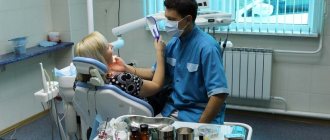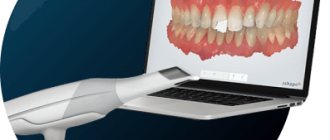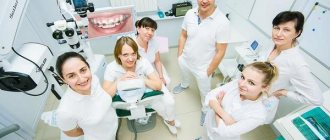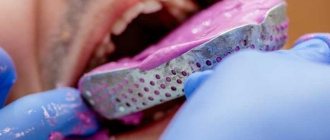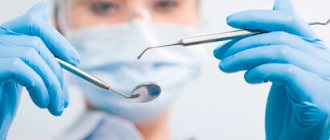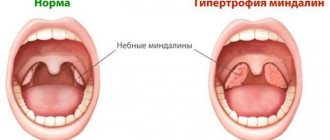We have all heard more than once in popular television programs about health that the human body is a single whole and when a problem appears in one of the organs, all the others suffer. Dentist patients are often convinced of this from their own experience. Experiencing pain, they turn to Moscow clinics for treatment of caries or periodontitis and are very surprised when the dentist does not find the cause of the pain and refers them for additional diagnostics or a consultation with a gnathologist.
What is gnathology?
The human dental system consists of the jaw bones, muscles, ligaments, teeth, tongue, temporomandibular joint (TMJ) and nerves. The work of all these organs, as well as their interaction with each other and with the body as a whole, is studied by gnathology. The proper functioning of our chewing system depends on the condition of the spine, on posture, on how a person breathes, and on many bad habits we have acquired. And, conversely, a downward influence is also possible: problems in the temporomandibular joint can result, for example, in pain in the legs.
Restorative dentistry has made amazing strides in recent years. Dentists - orthopedists, orthodontists, and estheticians have learned to literally recreate amazingly beautiful smiles that can change a person’s life. However, if during treatment the doctor does not take into account the myofunctional disorders the patient has, then the result of the work will not bring satisfaction to any of them. It is possible to achieve high aesthetics and improve the functioning of the dentofacial apparatus only if we consider each restored tooth not as a separate unit, but as an integral part of the whole organism.
Gnathology is closely related to such relatively new specialties as osteopathy, kinesiology, as well as neurology and otolaryngology. Dental gnathologists work closely with these specialists.
When to contact a gnathologist
If a patient has been treated by a dentist, but the pain in the teeth or jaw does not go away, it can be difficult to explain.
Any unaccounted for bump on a tooth or a prosthesis extending a few millimeters from the jaw can disrupt the normal movement of the jaw joint and lead to various unpleasant consequences.
Incorrect treatment can lead to various disturbances in the patient’s well-being:
- discomfort in the oral cavity;
- incomplete closure of the dentition;
- impaired jaw position;
- the appearance of dental anomalies.
You should not hope that all of the above violations will go away on their own. Quite the opposite: without finding out the cause and proper treatment, these symptoms will worsen and lead to chronic jaw pain or the risk of losing teeth.
By the way, there are symptoms that require early contact not just with a dentist, but with a gnathologist. Such symptoms can be expressed as:
- persistent muscle pain in the jaw, face, back of the head, neck or shoulder area;
- persistent headaches without an identified cause (usually in one half of the head);
- discomfort when closing teeth after treatment;
- regular tinnitus or tinnitus;
- clicking or crunching in the area of the jaw joints or ears;
- jamming of the jaw in a certain position when opening or closing the mouth;
- teeth grinding (bruxism).
Gnathology allows you to get a complete picture of the structure of the dental system of any person and find out everything about its features. This allows the specialist to understand the causes of any dental pathologies and guarantee successful treatment results.
However, there is no need to visit a gnathologist as regularly as a dentist. If the patient does not have any complaints, it is still important for him to get advice from this specialist before such important measures as prosthetics or installation of braces, so that the effect of treatment is maximum.
What is the temporomandibular joint, and how is it related to the functioning of our dental system?
The temporomandibular joint, or TMJ for short, is a two-part joint that attaches the lower jaw to the bones of the skull. It is responsible for the proper functioning of the lower jaw, for the processes of opening and closing the mouth and chewing food. Any changes in the joint lead to toothaches and discomfort in the neck and back of the head, as well as clicking in the joint, tinnitus and other symptoms.
Incorrect functioning of the TMJ is associated not only with bad childhood habits, but also with numerous unnerving situations. Due to frequent stress, the masticatory muscles are in constant tension. As a result, teeth can wear out or become loose, the articular head is displaced, the neurovascular bundle is pinched, severe pain occurs, and the person cannot chew food normally. We are so immersed in our problems that we don’t even notice how we constantly clench our teeth and learn about this bad habit only in a specialist’s office.
What causes TMJ dysfunction?
As the child grows, his dental system also develops—along with the other facial bones, the lower and upper jaw, fixedly connected to them, grow. A special feature of the lower jaw is the way it is attached to the cranial bones: it is suspended on them thanks to the masticatory muscles and two TMJs and can not only move, but also turn around.
This design ensures the correct connection of both jaws, the formation of a physiological orthognathic bite and the normal functioning of the dental system. Dentists of various specialties involved in the treatment and prosthetics of teeth in Moscow should try to maintain the relationship between the jaws. This is necessary for tight closure of the teeth, uniform tension of the masticatory muscles and normal functioning of the heads of the left and right TMJ.
Unfortunately, for a variety of reasons, permanent teeth deviate from their correct positions, disrupting the closure of the jaws. The reasons may be bad habits, regular stress that makes you clench your teeth, diseases and pathologies of internal organs, etc.
- To continue performing the vital function of chewing food, the body tries to correct the situation by taking advantage of the mobility of the lower jaw.
- To restore the impaired closure of the teeth, the jaw begins to shift, as a result of which the masticatory muscles on one side are stretched and on the other they are spasmed.
- This leads to displacement of the articular head of the TMJ and pinching of the nerves - the joint begins to click and hurt.
How can you understand that pain and spasms in the jaw area are associated specifically with the TMJ?
Most often, with disorders of the TMJ, people go to the dentist with complaints of toothache. And only an experienced dentist can determine that this patient needs to undergo a full examination by a gnathologist.
When diagnosing disorders in the functioning of the TMJ and the dental system as a whole, a number of devices are used that evaluate the functioning of the muscles and joints, determine exactly how the teeth close, and help relieve spasms. The patient must be examined using all of the above equipment in order to identify and eliminate the cause of anomalies that have arisen in this area.
About diagnostic difficulties in the work of a gnathologist
A gnathologist must understand a variety of health problems, since 85% of malocclusions are associated with pathologies in the body that are not related to dental problems. Such pathologies may include disorders associated with:
- violations of various sizes of the jaw apparatus or deviations in the location of the jaws relative to the base of the skull;
- pathologies of the mandibular joints or masticatory muscles;
- problems with the spine;
- pathological changes in the neck and shoulder muscles (which are very difficult to identify).
The course of such pathologies is especially aggravated by the presence of disorders in the patient associated with osteopathic, hormonal, neurological and psychological disorders.
Many patients do not realize that diseases of the TMJ (temporomandibular joints) and masticatory muscles can occur due to disorders in the skeletal muscles, spine or large joints of the body. Especially often, such disorders can occur with combined pathologies of the cervical spine and associated disorders in the TMJ, in the muscles (facial, chewing, trapezius) or in disturbed alignment of the dentition.
If such points are not taken into account, orthodontic treatment will be unsatisfactory. Thus, straightening teeth can lead to complications such as:
- loosening or dislocation of teeth;
- pain when chewing;
- increased tooth sensitivity;
- dysfunction of the jaw joints;
- exposure of tooth roots;
- lack of chewing (occlusal) contact of the upper and lower teeth.
Therefore, for the effective installation of dentures or braces, a mandatory interdisciplinary approach must be taken into account, which is mastered by gnathologists.
What techniques do you use to eliminate TMJ dysfunction?
In addition to special equipment, mouth guards and trainers help relieve tension and restore muscle function. That is why specialists prescribe them to patients before or after the installation of orthopedic structures. In addition, trainers and mouthguards also allow you to optimize and shorten the process of orthodontic treatment, especially when it comes to children. Previously, it was believed that a child with a narrow jaw could not avoid crowded teeth. Modern experts have refuted this statement and proved that jaws can “adjust” to any size of teeth, provided that nothing interferes with their growth. However, improper functioning of the muscles can stop the development of the jaws, and they will have to be expanded with the help of braces or complex treatment. A gnathologist helps you tone your muscles in a timely manner and avoid the appearance of serious curvatures. And this applies not only to children, but also to adults, with the only difference being that for the latter, the process of achieving the desired result will take a little longer.
Another way to restore proper muscle function is myogymnastics, a special program that stimulates the formation of a correct bite and its correction, preventing relapses after orthodontic treatment. The specialist will prescribe which exercises you will perform.
What therapeutic measures does a gnathologist use?
In order to correct various dental disorders, a gnathologist can use methods related to:
- Carrying out functional diagnostic methods (radiography, axiography, photo recording), which allows us to determine the nuances of the individual structure of the entire articular apparatus of the jaws and build a treatment plan.
- The modeling stage, at which the future bite is designed, taking into account the location of each individual tooth and the entire jaw as a whole. In this case, orthodontic treatment with SAP technologies can be used (dental restoration using the most precise methods of 3D technologies).
- Prosthetics using functional modeling methods.
- Treatment using stabilizer splints to eliminate discomfort and restore the correct position of the jaw.
Thanks to a gnathologist, you can solve many health problems related to:
- restoration of the proper functioning of the articular apparatus of the upper and lower jaw;
- relief from pain in the jaw, face, head or neck of unknown origin;
- correction of bite pathologies or consequences of injuries to the maxillofacial area;
- improvement of general well-being due to the restoration of hearing and vision in case of neurological problems after incorrect dental treatment.
Another way a gnathologist can correct improper muscle function is myogymnastics. This program includes exercises to stimulate the formation of a correct bite, its correction and to prevent complications after orthodontic treatment. Therapeutic exercises are selected individually for each patient by the specialist himself.
Should all dentists have knowledge of gnathology?
If you are seeing a qualified doctor, you do not have to consult a gnathologist before going to see him. Gnathology is the science of the coordinated work of the dental system, so every specialist working in a dental clinic has an idea about it. The doctor applies knowledge in the field of gnathology even when installing a filling. He doesn’t just “cover up” the carious lesion, but restores the affected area with the help of special materials, which he gives a certain shape in accordance with the bite.
The need for gnathologists in Russia
Professor V.Yu. played a huge role in the development of gnathology in Russia. Kurlyandsky and his student - Professor Valentina Khvatova. The need to develop this area of dentistry did not arise by chance. It turned out that not all orthodontists can calculate in advance the closure of teeth after prosthetics.
Incorrect closure of teeth when chewing leads to uneven chewing load on them. At the same time, teeth quickly fail, and patients experience discomfort while chewing. Complications of such disorders in patients can include severe headaches, bruxism, and serious muscle disorders.
Often osteopaths, neurologists, psychotherapists and other specialists have to be involved in the treatment of dental disorders. At the same time, patients with headaches of unknown cause or bruxism sometimes have to be treated in neurological clinics or departments of maxillofacial surgery. That is why modern dentists need solid knowledge of gnathology and the ability to use simple devices (articulators, face bows, etc.). Many dentists, trying to meet the increased requirements for their specialty, receive postgraduate education or courses in the field of gnathology.
Nowadays, many large dental centers and clinics employ specialists who are knowledgeable in gnathology. This applies not only to Moscow clinics, but also to dental centers in St. Petersburg, Tver, Chelyabinsk, Yekaterinburg and other Russian cities.
Do children need to visit a gnathologist?
Childhood is characterized by muscle dysfunction, which disrupts the normal development of the child’s dental system. This is why a gnathologist is often necessary for children. To correct these problems, comprehensive treatment must be carried out, the purpose of which is to expand the jaws of a small patient (braces are often used). It is the gnathologist who will be able to detect problems with muscle tone in a child better and faster than others and prevent possible tooth curvature in the future.
What to expect from a consultation with a gnathologist
A gnathologist identifies the individual structural features of each patient’s jaw system. To do this, the specialist conducts a complex of functional diagnostics, radiography, makes a diagnosis and draws up a treatment plan.
First, the dentist-gnathologist conducts a functional study with diagnostic and treatment preparation, and then correlates all the results obtained with the individual anatomical parameters of the patient.
During treatment, a gnathologist can use various devices. The individual parameters of the patient’s dental system are measured using devices – an articulator and a facebow. An articulator is a device for reproducing the movements of the lower jaw, taking into account its individual characteristics. Dental technicians in laboratories always use articulators in their work, which are adjusted according to the individual parameters of the patient. To record the individual positions of the lower jaw in relation to the upper jaw and to transmit individual parameters of jaw movement, another gnathologist’s device is used - the face bow.
The facial bow and articulator make it possible to record and reproduce the individual characteristics of mandibular movements. This measurement technique allows you to make prosthetics as correctly as possible.
As a result, the prostheses become ideally comfortable for the patient and require minimal time to get used to.
After such a professional approach to prosthetics, the load on the teeth is distributed as evenly as possible, which increases the service life of any implants, dentures and the reliability of restoration processes.
To restore the jaws, eliminate discomfort and correct incorrect jaw position, splint therapy is used. Mouthguards or trainers to normalize muscle functions are often prescribed to the patient at the preliminary stage or after installation of a prosthesis. These devices help make the orthodontic treatment process more comfortable and effective.
Children especially often need treatment from a gnathologist.
Muscle dysfunction in childhood disrupts the development of the dental system, and therefore requires the use of complex treatment to expand the jaws (often using braces). That is why a gnathologist can promptly identify problems with muscle tone in a child, restore them and prevent future curvatures.
Gnathologists at our clinic
Boguslavsky Dmitry Mikhailovich
Chief physician
19 years of experience
“I like to give people smiles, I like what I do and do it in a way that is not embarrassing. I would like to show people that dentistry can be honest and “for yourself.”
Shirshov Semyon Vadimovich
Head of the Orthopedic Department
9 years of experience
“Everyday life as a dentist is a life process when the profession becomes a part of your life, and patients become good friends.”
Pozdeev Igor Andreevich
Orthopedist, surgeon, gnathologist
12 years old
“In my case, choosing the profession of a doctor was a natural event, because my parents, grandparents, uncles and aunts are doctors”
Kasyanova Yana Alexandrovna
Orthopedist, gnathologist
5 years of experience
“Responsibility and sensitivity are my strengths. I love to listen and hear the patient in order to solve exactly the problem with which he came to me.”
Volovikov Oleg Igorevich
How is an appointment with a doctor?
An appointment with a gnathologist is not much different from an appointment with other specialists. First of all, the doctor asks the patient in detail about his complaints and finds out the history of the disease. Particular attention is paid to the presence of other chronic diseases in the patient. Since dysfunction of the dental system is closely related to the nervous system, the presence of injuries, and dental diseases, the doctor dwells on these aspects in more detail.
It is mandatory to examine the oral cavity and evaluate the condition of the facial part of the skull and spine. To make an accurate diagnosis, the specialist prescribes additional instrumental and laboratory research methods that will help carry out differential diagnosis and identify the main cause of the patient’s complaints.
Sometimes it may take some time to make a final diagnosis, and the patient will not limit himself to one visit to the gnathologist. However, the use of modern technologies greatly simplifies the diagnostic process. After the cause of the disorders has been found, the doctor selects a set of the most effective treatment measures for the patient.
What do gnathologists do?
The human body is a complex system, all elements of which are interconnected. Any failures in one structure most often provoke violations in others. Understanding the subtleties of the relationship between the components of the dentofacial apparatus and the musculoskeletal skeleton, a gnathologist can quickly determine the causes of failures and restore dental harmony. He analyzes all existing health problems at the level of cause and effect in order to offer the most optimal ways to treat pathologies.
Causes of problems with the jaw and bite
Violation of the location of the dentition relative to each other can be hereditary or acquired. The anomalies usually develop in childhood.
Most often the reasons are:
- infection of the fetus during gestation, birth trauma;
- genetic predisposition;
- rickets;
- improper breastfeeding, position of the baby during sleep;
- abuse of a pacifier, constant sucking of a finger or objects;
- untimely introduction of solid foods into the baby’s diet;
- early loss of baby teeth;
- frequent colds leading to mouth breathing;
- jaw injuries;
- incorrect dental treatment, installation of orthopedic and orthodontic structures;
- incorrect posture.
